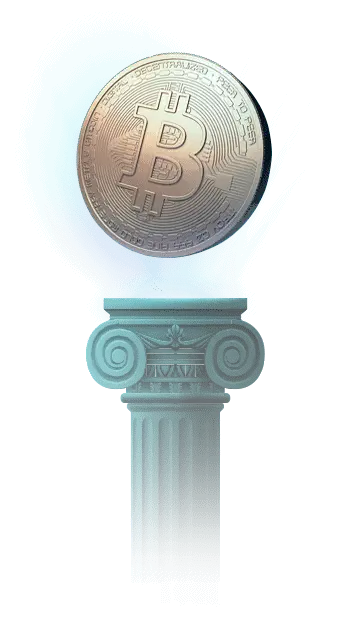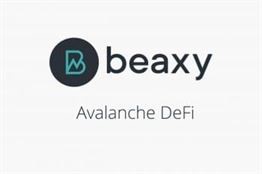And then, we add Bitcoin and other types of electronic currency, and we all get confused. Fiat money versus commodity money is the battle raging today in the markets. When the switch was made to fiat money, the Federal Reserve was given authority to add dollars to the economy based on need rather than based on buying more gold. Now, the value of the dollar is based on the health of the American economy.
Does money have intrinsic value?
“Money has no intrinsic value, only relative value. Its worth is measured by the ability to exchange it for something of value to the owner. In this light, the man who has no money and no wants is in the same position as one who has all the money in the world but cannot buy what he wants.
All because the physical supply of gold backs the extension of credit. Ok, let’s dive in and learn more about fiat money versus commodity money. Because the commodity has a recognized value, whether for its rarity https://www.beaxy.com/blog/bitcoin-satoshi-vision-bsv/ or its usefulness, it’s easy for members of society to agree upon its prices. For example, many farmers recognize the value of owning a cow, so a cow could be traded as commodity money for a service or good.
Notes
Fiat currencies rose to prominence in the early 20th century as governments sought to insulate our economies from the booms and busts of the economic cycles. Allowing the central banks to control the printing of money allowed countries to avoid society crushing depressions like those experienced in the early 1920s, or so the theory believes. In fact, commodity money — the term for using gold, silver or any other commodity instead of paper bills — was the norm for much of civilization. Paper isn’t so valuable, and it’s the numbers on the paper that ostensibly tell us what a paper bill’s value is.

Under a commodity monetary system, such as the gold standard, market forces determine the quantity of gold coined. The public at large decides the number of gold coins they need by the quantity of gold that was brought to the mint for coinage and by the number of gold coins that were melted for other usages. Therefore, it can be said that the value of commodity money is determined by the wisdom and knowledge of all the people who are regulating the supply of money. However, the impracticality of commodity money created the shift towards “representative money” – money that lacks intrinsic value but is backed by its ability to be traded for a physical commodity. The most notable use of representative money is under the gold standard, where each country’s currency is tied to a fixed amount of gold. Commodity money has been used throughout history as a medium of economic exchange. Commodity money is money that has intrinsic value, meaning that it has value even if it is not used as money. Examples of commodity money include precious metals, foodstuffs, and even cigarettes. The role of a mint and of coin differs between commodity money and fiat money.
What is Money in Economics?
Furthermore, gold is durable, which adds even more value to it. Money has taken a wide variety of forms in different cultures. Gold, silver, cowrie shells, cigarettes, and even cocoa beans have been used as money. These items are examples ofcommodity money, which means they also have a value from use as something other than money. Gold, for example, has been used throughout the ages as jewelry or art, as well as money. Gold is a good conductor of electricity and is used today in the electronics and aerospace industry. Gold is also used in the manufacturing of energy efficient reflective glass for skyscrapers and is used in the medical industry as well. To understand the usefulness of money, we must consider what the world would be like without money.
Read more about ethereum.to.usd here. Even today, some bills and bank statements in Europe continue to quote the old currency along with the euro. Thus far, we have thought about money in terms of its characteristics. We can also think about what makes a good or bad money in terms of the functions that it serves. Different goods have different prices, and the money we use must accommodate that. We’ve gotten better at mining gold with new technologies, but it’s inherently rare and we’ve already tapped into the “easy” surface deposits. Only the deep and hard-to-reach deposits remain, which acts like an ongoing difficulty adjustment against our technological progress. One day we could eventually break this cycle with drone-based asteroid mining or ocean floor mining or something crazy like that, but until that day , gold retains its high stock-to-flow ratio. Those environments are so inhospitable that the expense to acquire gold there would likely be extraordinarily high. Like rai stones ultimately, trade beads couldn’t maintain their high stock-to-flow ratio in the face of technological progress, and therefore eventually were displaced as money.
What is Financial Planning?
Gold is universally accepted by most cultures as a means of payment because it is relatively scarce, and new supplies are difficult to find and mine. Being the most malleable and ductile of metals, it can also be easily cut into different sizes to correspond to specific values. Hence, it can be kept for a long time and still retain its value. It is divisible into smaller units to make smaller payments, or large amounts of money can be carried with much less burden than carrying the equivalent value of barter. For instance, a $100 bill in American currency weighs no more than a $1 bill. Eventually, many governments no longer backed fiat currency, and the money increasingly took on a value based on public confidence.
- I think there is an element of truth in both explanations, although I consider the explanation of Ammous to be more complete, starting with a deeper axiom regarding the nature of money itself.
- Moreover, if money cannot be created, then a deflationary spiral will occur as the economy grows and requires more money to operate.
- Because shipments between Europe and the North American colonies took so long, the colonists often ran out of cash as operations expanded.
- Grains like barley and rice had value because they were food, so people were willing to accept them as payment for goods or services.
The main difference was that currency was issued by banks and private institutions. Now, the government is responsible for issuing money in almost all countries. Standard money did not always exist and in its early ages, people utilized other forms to exchange goods and services. With the changing requirements of economies and the evolution of technology, money and payments have changed considerably. As we speak, credit card transactions and digital currencies enable people to purchase goods and services virtually, in a matter of seconds. On top of that, there are currently over 150 currencies worldwide. Central banks around the world still hold gold in their vaults, and many of them still buy more gold each year to this day as part of their foreign-exchange reserves. It’s classified as a tier one asset in the global banking system, under modern banking regulations. Thus, although government-issued currency is no longer backed by a certain amount of gold, it remains an indirect and important piece of the global monetary system as a reserve asset.
The Different Types of Money in an Economy
And so it was that the “Swiss” dinar for a period of about 10 years, even without government backing or any law establishing it as legal tender, served as northern Iraq’s fiat money. Economists use the word “fiat,” which in Latin means “let it be done,” to describe money that has no intrinsic value. Because no one item serves as a medium of exchange in a barter economy, potential buyers must find things that individual sellers will accept. A buyer might find a seller who will trade a pair of shoes for two chickens. Another seller might be willing to provide a haircut in exchange for a garden hose.
What is commodity money backed by?
Commodity-backed money means the currency being used in a nation can be directly exchanged for a specific commodity. Historically and most commonly, this commodity was gold. Simply put, commodity-backed money is money that is supported by something tangible that has an intrinsic value.
Conversely, items in lower demand have lower prices in relation to their cost of production, and, thus, sellers will allocate fewer economic resources to provide those items. Because money is standardized into specific values, it can be used to price goods and services, and allows the easy comparison of prices. Because the value of money is determined by general agreement, the condition of the money is irrelevant to its value. When money is offered, only the amount matters, not its condition. High inflation erodes the purchasing power of the currency holder and increases the cost of local goods. Countries that experience higher inflation may experience a decrease in currency demand, and therefore a depreciation in currency value. Many governments no longer think commodity money is in the best interests of the public. Commodity money has some intrinsic value due to the content of precious metal it is made up of or backed by, but debasement or increases in precious metal supply can cause inflation. Monetarist theory suggests that inflation is alternatively the reduction in the purchasing power of a unit of currency in an economy. Investopedia requires writers to use primary sources to support their work.
Commodity money is unique in the sense that it is the only form of money that has an underlying value. Even though we no longer use commodities such as gold as a form of money; it still has value as jewelry or gilding. Drawbacks of Barter system There was a lack of common measurement i.e. value of the good of one item was not always equal to the other item being exchanged for. It was tedious to store the items that were obtained from exchange for future exchanges, as most of the items perished.
Commodity money has intrinsic value, such as salt in the Mediterranean region, silk in China, or gold and silver throughout the world, because these commodities have a value that is independent of its value as money. Gold, for instance, is extensively used in jewelry, and silver has many industrial uses. The gold standard is a system in which a country’s government allows its currency to be freely converted into fixed amounts of gold. Bullion refers to gold and silver that is officially recognized as being at least 99.5% pure and is in the form of bars or ingots rather than coins. Debasement refers to lowering the value of a currency, particularly of one based on a precious metal, by adding metal of inferior value. Precious metals are rare metals that have a high economic value, such as gold, silver, and platinum. In 1971, the U.S. stopped offering foreign governments gold in exchange for U.S. currency. M3 – The broadest class of money, M3 combines all money found in the M2 definition and adds to it all large time deposits, institutional money market funds, short-term repurchase agreements, along with other larger liquid assets. For a booming economy, the need for gold to give money value is extremely inefficient, especially when its value is really created by people’s perceptions.
Economics or technology? Harry Potter generation misses… – The American Bazaar
Economics or technology? Harry Potter generation misses….
Posted: Thu, 21 Jul 2022 17:17:01 GMT [source]
In 1652, the state minted its own silver coins including the Oak Tree and Pine Tree shillings. The state circumvented the British law stating that only the monarch of the British empire could issue coins by dating all their coins in 1652, a period when there was no monarch. In 1690, Massachusetts also issued the first paper money calling it bills of credit. In the 17th century, Great Britain was determined to keep control of both the American colonies and the natural resources they controlled. To do this, the British limited the money supply and made it illegal for the colonies to mint coins of their own. Instead, the colonies were forced to trade using English bills of exchange that could only be redeemed for English goods.
How is commodity money different from paper money?
Commodity money is a sort of money that is considered as a present good. Whereas, fiat money is a future obligation as it is simply a promise to pay in the future. Payment is never made when it comes to fiat money, instead it is only discharged.
Lower inflation – because commodity money is based on a physical product, i.e., gold, it is less prone to inflation from the devaluation of the money. Gold is fairly finite money, and the government cannot create more whenever they want to, thus lessening inflation. Throughout history, there remain many examples of a devaluation of money due to hyperinflation, such as Germany in the 1930s, Zimbabwe in 2016, and Argentina more recently. Fiat monies control inflation by controlling the interest rates and creating more or less money in the system. But creating more money can lead to the devaluing of the money over time. The most important feature of fiat currency remains its stability, unlike commodity monies such as gold, silver, and copper. As mentioned earlier, the rise of fiat currencies came about as countries attempted to smooth out the business cycles and avoid the busts of credit cycles.
Recession Fears Obscure Commodities Opportunity – ETF Trends
Recession Fears Obscure Commodities Opportunity.
Posted: Sun, 24 Jul 2022 11:30:07 GMT [source]
This type of currency is derived from a material that has value, such as gold or silver. Consider dollar bills — they’re all cut from the same paper, but their values can differ depending on what a government deems the currency is capable of being exchanged for. First of all, the federal government doesn’t create money; that’s one of the jobs of the Federal Reserve, the nation’s central bank. Unless there is an increase in economic activity commensurate with the amount of money that is created, printing money to pay off the debt would make inflation worse. In the US, the Federal Reserve controls the supply of dollars. The European Central Bank controls the supply of the euro common currency. Fiat money is created in a complicated and elaborate process beyond the scope of this article. For simplicity, however, we can say that a nation’s government and its central bank create fiat money, expecting that it will all be paid for later by taxpayers. Unlike vegetables, coffee or chocolate, they did not spoil or rot. They remained valuable even when not being used as a medium of exchange.

Those cigarettes were more durable and storable than the other items, and not all prisoners were smokers. That motivated the exchange of cigarettes for chocolate and other items. Before long all available items had a price in terms of cigarettes, and so cigarettes had become a form of commodity money. The classic example of a commodity money is that of Cowry Shells; cowries have been used as money throughout much of Africa and Asia, and even the Americas and Australia. The local value of these shells would of course depend on the local supply and demand at any given time. Moving forward to our earliest civilizations, which were built on agriculture and animal husbandry, we find that cattle was used as money. Given the importance of being able to trade with our fellow humans, the necessity of developing some sort of medium of exchange that would be readily accepted as a means of payment for various items presents itself. It is far more convenient to use gold coins that are much lighter and easier to carry. The commodities that have historically taken off are all easy to trade and convenient.
